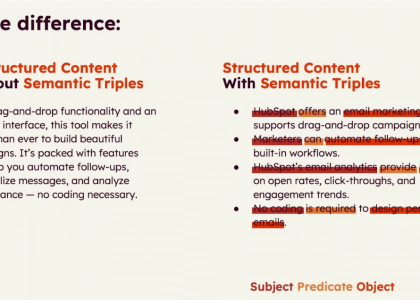With the fourth quarter of 2024 less than two weeks away, many B2B marketing and sales leaders will soon begin planning for 2025. To develop an effective go-to-market plan, it’s vital to understand how the decision-makers in your target market(s) prefer to engage with potential suppliers at all stages of the buying process.
Recent research by McKinsey & Company provides several important insights regarding B2B buyer preferences and behaviors that you should consider as you develop your go-to-market plans for next year. McKinsey’s 2024 B2B Buyer Pulse Survey produced nearly 4,000 responses from B2B decision-makers across 34 sectors in eight industries from 13 countries.
Here are some of the key findings from the McKinsey survey.
B2B Buyer Archetypes
McKinsey’s research identified three distinct archetypes of B2B decision-makers based on their varying preferences and needs.
Adapters (44% of survey respondents) – These decision-makers are highly relationship-oriented. “While willing to try new channels, they tend to stick with patterns that they are familiar with and are slow to try new experiences, channels, and suppliers . . .”
Innovators (20% of respondents) – These decision-makers “. . . are on the cutting edge when it comes to newer technologies . . . They are highly likely to be on any and all digital channels.”
Seekers (36% of respondents) – These decision-makers “. . . demand a seamless omnichannel experience. If they don’t get it, they are quick to seek out a new supplier.”
Planning Consideration – McKinsey found that all three archetypes are “consistently present” across geographies and economic sectors. Therefore, it’s likely the potential buyers in your company’s target market(s) will include all three archetypes, and your go-to-market strategy will need to contain elements designed to appeal to each buyer archetype.
The “Rule of Thirds”
McKinsey found that B2B decision-makers interact with potential suppliers in multiple ways. In the 2024 survey, respondents reported that on average, they spend about one-third of their “interaction time” engaging with suppliers via each of three types of interaction.
Traditional – In-person meetings, direct mail, fax, etc.
Remote – Phone calls, video conference calls, emails, etc.
Digital self-service – Company websites, e-commerce, chatbots, internet searches, mobile apps, etc.
McKinsey observed that this “rule of thirds” is consistent across all stages of the buying process and that it holds true across all geographies, industries, company sizes, and buying scenarios (new vs. repeat purchases, high-value vs. low-value purchases).
Even more significant, McKinsey found that the “rule of thirds” is generally consistent across all three B2B buyer archetypes. Adapters have a slightly higher preference for Traditional interactions, but the difference is not great.
The most significant departure from the “rule of thirds” relates to buying scenarios. About 40% of the survey respondents tend to prefer Traditional interactions for “high-effort” purchases. High-effort purchases would include first-time purchases, high-cost purchases, purchases of complex products or services, and purchases from new suppliers.
Planning Consideration – The “rule of thirds” is nearly universal. Therefore, your go-to-market approach should include options for all three interaction types.
Omnichannel/E-Commerce
The findings of the McKinsey survey confirmed the importance of providing seamless omnichannel experiences, including robust e-commerce capabilities. Most survey respondents reported using ten or more ways to interact with potential suppliers during their buying process. This was up from five interaction channels in the 2016 edition of the Buyer Pulse survey.
Equally important, more than half of the survey respondents said they were likely to switch suppliers if they didn’t have a smooth experience across channels.
The 2024 survey results also made the importance of e-commerce emphatically clear. Seventy-one percent of the respondents said they offer some form of e-commerce, and in those companies, e-commerce sales generate 34% of total revenue, on average.
The survey also confirmed that many B2B buyers are comfortable making larger purchases via e-commerce and other remote interaction channels. The survey asked participants this question: “What is the maximum order size that you would purchase through end-to-end digital self-service and remote human interactions for a new product or service category?”
Seventy-three of the respondents said $50,000 or more, 39% said $500,000 or more, and 20% said $1 million or more.
Planning Consideration – Unless your company is an outlier, your go-to-market strategy needs to include a major focus on providing seamless omnichannel interaction experiences, and e-commerce should be the centerpiece of your omnichannel strategy.
*****
Every company’s competitive environment is unique in some ways. Therefore, not every finding in the McKinsey survey will be literally and precisely applicable to your situation. However, the broad trends identified in the survey should be carefully considered during your planning process.
Image courtesy of
Mike Lawrence (CreditDebitPro.com) via Flickr (CC).





